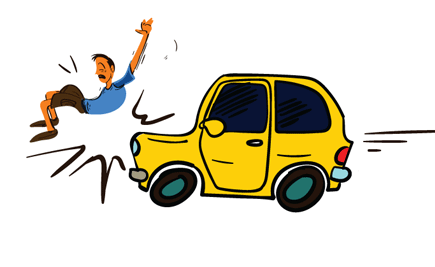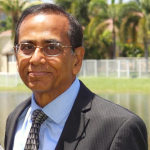
When you look toward the question of preventing harm, there are just so many answers, so many ways we can throw a pillow between us and our mistakes.
Nazarul Islam
Often, we find a book that changes the way we think about our world. A disturbing word which we get to hear, refer or say almost every day is, ‘accident’. Going through Jessie Singer’s absorbing book “There Are No Accidents: The Deadly Rise of Injury and Disaster— Who Profits and Who Pays the Price” has drastically changed my perceptions of the way I looked at our world!
“Around 170,000 people will die by accident next year. I can tell you this because around 170,000 people died by accident last year, and not much is going to change,” writes Singer. Obviously, when we call something an accident, we feel better at once, and at once, fail to prevent it from happening again.
Jesse Singer, a New York journalist and author, was moved to investigate the history of “accidents” Not long ago, my teacher-colleague had asked me to use the scare quotes after her best friend Eric Ng was killed in 2006 by a drunk driver while riding on a Hudson River bike path in Manhattan. The driver mistook the bike path for the road, which is not a rare occurrence. At many points, the path was accessible to cars.
Years later, a terrorist in a rented truck allegedly, took a similar path as the man who killed Ng, deliberately killing eight people and injuring 11 more. It was only after that cataclysmic event that authorities moved to physically protect the bike path.
After the attack, it was reported that the city and state got together to barricade every possible entrance. And, for my teacher friend, this provided an irrefutable proof that what happened to Eric could have been prevented, but no one cared then—because it was treated by someone as an ‘accident.’
Is there no way to predict it, or no way to prevent it? My colleagues say ‘No’. I think, they may all be wrong.
Why do we accept as a sad twist of fate that the pedestrian was killed because he was crossing the street at night? That the baby died because she ate a methadone pill someone dropped on the floor. Or that the machine operator lost his fingers because he was bad at his job or unlucky?
Author Jesse Singer proposes that we look at these tragedies through a different lens: Why was the street not well lighted, and why do drivers on that stretch almost always exceed its speed limit? Why was a loose pill on the floor in the first place? Why was the machine operator overworked?
Why don’t we ever focus on the last causal factor, in any accident? What we screw up about ‘accidents’ is looking at the last person who made a mistake. Accidents have layered causality. When you look toward the question of preventing harm, there are just so many answers, so many ways we can throw a pillow between us and our mistakes.
The pedestrian could have been saved by better lighting, signals and a highly visible crosswalk. The baby could have been saved if the pills were distributed in blister packs. The machinist might not have lost his finger if the assembly line moved slower and his protective equipment was better.
Wanting to blame individuals for systemic problems is why it took our country, such an unconscionably long time to realize that individual opioid users were not solely responsible for their overdose deaths. They were systematically victimized by pharmaceutical companies that lied about their products’ addictiveness and efficacy, pushed pills on doctors and created a generation or more of needless suffering.
Richard Sackler, CEO of Purdue Pharma, manufactures of widely abused synthetic opiates, has defended his Company: “We have to hammer on abusers in every way possible,” They are the culprits and the problem. They are reckless criminals.”
For decades, car manufacturers have laid blame for fatalities and serious injury on “the (crazy nut) driver behind the wheel,” a mantra for an industry averse to spending money on improving safety. Ralph Nader, the ethics practitioner in trade, has debunked this idea in his seminal 1965 book about dangerous cars, “Unsafe at Any Speed.” Nader claimed, correctly, that carmakers refused to make cars as safe as possible.
Today, of course, seat belts and air bags are mandatory, but we must not forget how the industry resisted its use in the beginning!
“We’ll have to close down,” whined Henry Ford II when federal officials proposed new safety standards for 1968 models.
Raising the drinking age significantly lowered the number of drunk-driving crashes in this country. “Breathalyzers would eliminate them overnight,” said Singer. “People might debate whether saving all those lives is worth it,” but the day could come when all new cars are equipped with systems that will prevent the ignition from starting if they sense a driver is drunk.
Slapping warning labels on products may be a good thing, but the practice can also lead to wrongly blaming a person who is injured when something goes awry.
Think of the infamous 1992 case of the woman who was seriously injured when she spilled a cup of McDonald’s hot coffee in her lap. The victim, was attacked as a money seeker who refused to take personal responsibility, when in fact the fast-food franchises were required to serve coffee at much higher temperature than was safe. Also, the company had already received 700 reports of severe accidental burns from its coffee.
A recent increase in pedestrian deaths has led many cities, including Los Angeles, to embrace initiatives to reverse this disturbing trend, but car companies do not seem interested, Singer said, in figuring out ways to make cars safer for pedestrians.
In some European countries and in Japan, we know it for a fact that cars are equipped with exterior air bags, which can protect pedestrians from serious injury and death.
America’s Transportation Secretary Pete Buttigieg, alarmed at the rising number of traffic deaths, recently announced $5 billion in federal grants would be available to states that would allow them to lower speed limits — which are based, preposterously, on how fast drivers go along certain stretches. The funds could also be used to design safer streets, including adding dedicated bus and bike lanes, better lighting and more crosswalks.
It will come as no surprise that Black, Latino and Indigenous people suffer higher rates of accidental death than whites from causes as disparate as car crashes and house fires.
Because racist policies such as slum clearance made way for interstate highways that bisected Black neighborhoods, Black people, who own cars at a lower rate than whites, often live close to roads designed to facilitate fast traffic.
And there is disturbing evidence of racial bias in the treatment of pedestrians.
Researchers at Portland State University, discovered that drivers yield the right of way significantly less often to Black pedestrians than white pedestrians.
Almost every day, I drive past the intersection on Venice Boulevard and Shell Avenue close to where the actor Orson Bean was struck and killed by two cars as he crossed the four-lane street one dark evening two years ago. There’s a new bright crosswalk, warning lights and signs now where before there were none.
I used to think his death was an unfortunate accident. I’m starting to think of it as inevitable. Is there a small streak in a corner of the mind that makes it happen?
__________________
 The Bengal-born writer Nazarul Islam is a senior educationist based in USA. He writes for Sindh Courier and the newspapers of Bangladesh, India and America. He is author of a recently published book ‘Chasing Hope’ – a compilation of his articles.
The Bengal-born writer Nazarul Islam is a senior educationist based in USA. He writes for Sindh Courier and the newspapers of Bangladesh, India and America. He is author of a recently published book ‘Chasing Hope’ – a compilation of his articles.